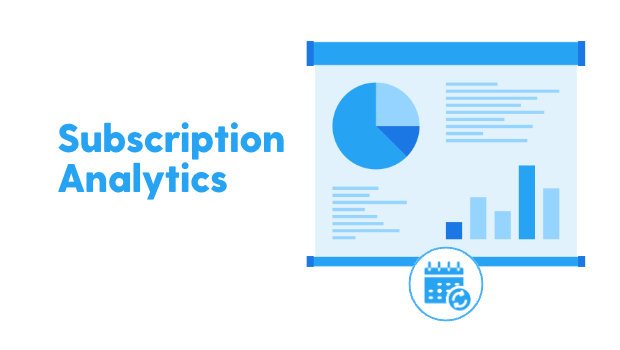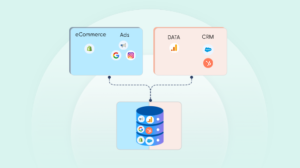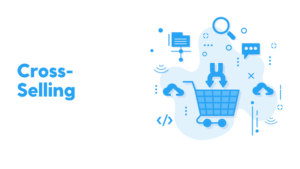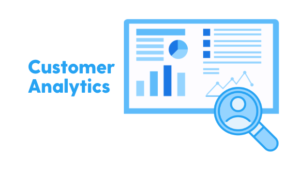Subscription analytics refers to the process of tracking and analyzing data related to subscriptions for a business or service. This can include data on the number of subscribers, subscriber retention rate, revenue from subscriptions, and other metrics. By analyzing this data, businesses can gain insight into the performance of their subscription offering and make informed decisions about how to maximize profitability.
The customer acquisition cost (CAC) to lifetime value (LTV) ratio is an important metric for subscription businesses, as it helps them understand the profitability of their customer acquisition efforts. A high LTV-CAC ratio indicates that a business is acquiring customers at a low cost relative to the value that they generate over the course of their relationship with the business.
There are a few Reasons why the LTV-CAC Ratio is Especially Important for Subscription Businesses
- Subscription businesses rely on recurring revenue: In a subscription business, the majority of revenue is generated through recurring payments from customers. Therefore, it is important to acquire customers at a cost that is sustainable over the long term.
- Customer acquisition can be a significant expense: Acquiring new customers can be a significant expense for a subscription business, especially if the business relies on paid marketing channels. Therefore, it is important to ensure that the value generated by these customers over the course of their relationship with the business is sufficient to justify the acquisition cost.
- Customer retention is important: In a subscription business, customer retention is especially important, as it directly impacts the recurring revenue that the business generates. Therefore, it is important to acquire customers at a cost that allows for a positive return on investment over the long term.
By tracking the LTV-CAC ratio, subscription businesses can ensure that they are acquiring customers in a profitable manner and identify opportunities to optimize their customer acquisition efforts.
Define Subscription
A subscription agreement is one in which an individual or organisation pays a recurring fee or amount in exchange for access to a product, service, or content for a certain period of time. Subscriptions are frequently used in a variety of industries, such as entertainment, software, media, publications, and e-commerce.
In a subscription model, customers often sign up for a set period of time, such as monthly, quarterly, or yearly, and agree to pay the recurring amount throughout that time. The subscription fee ensures that the user has ongoing access to the subscription service’s offerings. Subscriptions offer the ease of continuous access to products or services, regular updates, and, in many cases, the option to customise or personalise the experience, these can be controlled via a variety of channels, including websites, mobile apps, and third-party platforms. They can be cancelled or adjusted by the subscriber based on their requirements and preferences, often within the provider’s terms and conditions.
Importance of Subscription Analytics
Powerful subscription analytics and reporting can be a valuable tool for managing and optimizing your subscription business. Here are some key benefits of using subscription analytics and reporting:
- Manage monthly recurring revenue (MRR): Subscription analytics and reporting can help you track and understand your MRR, including how it is changing over time. This can be useful for identifying trends, predicting future revenue, and planning for growth.
- Understand subscription profitability and lifetime value (LTV): Subscription analytics and reporting can help you understand the profitability of your subscriptions, including factors such as customer acquisition costs and churn rates. This can be useful for optimizing pricing, identifying opportunities for upselling or cross-selling, and improving customer retention.
- Drive retention: Subscription analytics and reporting can help you understand your churn rates and identify key drivers of churn. This can be useful for developing customer retention strategies and improving customer satisfaction.
Subscription Analytics Strategy
There are several key strategies that businesses can use to improve their subscription analytics and optimize the performance of their subscription business. These strategies include:
- Customer Segmentation: Dividing subscribers into different groups or segments based on characteristics such as age, location, or usage patterns can help identify trends and patterns within the data and inform targeted marketing and retention efforts.
- Cohort Analysis: Cohort analysis can be a useful tool for analyzing the customer acquisition cost (CAC) and lifetime value (LTV) of your business. Here’s how it might work:
- Define your cohort groups: First, you will need to define the cohort groups that you want to analyze. This could be based on a variety of factors, such as the month in which customers made their first purchase, the channel through which they were acquired, or the product they purchased.
- Calculate CAC and LTV: Next, you will need to calculate the CAC and LTV for each cohort group. To calculate CAC, you will need to divide the total cost of acquiring a customer by the number of customers acquired. To calculate LTV, you will need to estimate the total revenue that a customer will generate over the course of their relationship with your business.
- Analyze the data: Once you have calculated CAC and LTV for each cohort group, you can use cohort analysis to track changes in these metrics over time. This could help you identify trends or patterns in your customer acquisition and retention efforts, and identify opportunities to improve CAC and LTV.
- Optimize your customer acquisition efforts: Based on your analysis, you can then make changes to your customer acquisition strategy to try to optimize CAC and LTV. This could involve adjusting your marketing spend, experimenting with different channels or tactics, or making changes to your pricing or product offering.
- By using cohort analysis to track CAC and LTV, you can gain a deeper understanding of the effectiveness of your customer acquisition efforts and identify opportunities to improve the profitability of your business.
- Personalization: Using data and analytics to tailor marketing, customer service, and product development efforts to individual subscribers can help improve retention and customer satisfaction.
- A/B testing: Comparing the performance of different marketing or retention strategies can help identify the most effective approaches for different segments of subscribers.
- Customer feedback: Gathering and analyzing customer feedback can help identify pain points, preferences, and opportunities for improvement in the subscription experience.
By implementing these and other strategies, businesses can use subscription analytics to drive growth and improve the performance of their subscription business.
Subscription Analytics Examples
Here are a few examples of how businesses might use subscription analytics in real life:
- A streaming service such as Netflix or Hulu might use subscription analytics to track customer acquisition, retention, and churn rates to inform marketing and content development efforts. They might also use this data to identify trends in customer behavior, such as which types of content are most popular or when and how customers are most likely to cancel their subscriptions.
- A subscription-based eCommerce company such as Birchbox or Dollar Shave Club might use subscription analytics to track revenue and identify trends in customer behavior, such as which products are most popular or when and why customers are most likely to cancel their subscriptions. They might also use this data to inform the development of new products or marketing campaigns.
- A software company that offers a subscription-based service such as Adobe Creative Cloud or Microsoft Office 365 might use subscription analytics to track customer acquisition, retention, and churn rates, as well as revenue trends. They might also use this data to identify trends in customer behavior, such as which features are most popular or when and why customers are most likely to cancel their subscriptions.
By analyzing this data and using the insights it provides, businesses can make informed decisions that help optimize the performance of their subscription business.
Subscription Analytics Use Cases
- Identifying trends in customer behavior: By analyzing customer data, businesses can identify trends in customer behavior, such as the AOV, frequency of purchases or the types of products or services that are most popular. This can help businesses optimize their product offerings and marketing efforts to better meet the needs of their customers.
- Improving customer retention: By analyzing data on customer retention, businesses can identify patterns that may be contributing to churn, such as high prices or poor customer service. By addressing these issues, businesses can improve retention rates and reduce the cost of acquiring new customers.
- Optimizing pricing strategies: By analyzing data on revenue and customer retention, businesses can identify the optimal pricing strategy for their products or services. For example, they may find that lower prices lead to higher customer acquisition, but also result in lower lifetime value. By finding the right balance, businesses can maximize revenue and profitability.
- Identifying upsell and cross-sell opportunities: By analyzing customer data, businesses can identify opportunities to sell additional products or services to existing customers. For example, a company that sells monthly subscriptions for beauty products may find that customers who purchase a particular type of product are also interested in a related product, such as a particular type of skincare product. By targeting these customers with targeted marketing efforts, the company can drive additional revenue from its existing customer base.
- Personalizing the customer experience: By analyzing customer data, businesses can tailor the customer experience to the individual needs and preferences of each customer. For example, a company that sells monthly subscriptions for fitness products may find that certain customers are interested in specific types of workouts or equipment. By providing personalized recommendations based on this data, the company can improve the customer experience and drive customer loyalty.
- Optimizing marketing efforts: By analyzing data on customer acquisition and marketing spend, businesses can identify the most effective marketing channels and tactics for acquiring new customers. For example, they may find that certain types of marketing efforts, such as social media advertising or email marketing, are more effective at driving sign-ups than others. By focusing their marketing efforts on the most effective channels, businesses can maximize their return on investment. Read more – Marketing Attribution
- Improving customer service: By analyzing data on customer interactions with customer service, businesses can identify patterns that may be contributing to customer dissatisfaction. For example, they may find that certain types of customer issues are more common than others, or that certain customer service representatives are consistently outperforming their peers. By addressing these issues, businesses can improve the customer experience and drive customer loyalty.
- Forecasting future performance: By analyzing data on past performance, businesses can develop forecasts of future performance and identify potential risks and opportunities. For example, they may use data on customer acquisition and retention to predict future revenue and cash flow, or use data on customer feedback to identify potential issues that may impact future performance. By using these insights to inform strategic decision
Top 10 Subscription Analytics KPIs
- Retention Rate: The percentage of subscribers who continue their subscription from one period to the next.
- Churn Rate: The percentage of subscribers who cancel their subscription during a certain period.
- Reactivation Rate: The percentage of previously churned subscribers who re-subscribe.
- Repeat Purchase Rate: The percentage of subscribers who make additional purchases after their initial purchase.
- Customer Lifetime Value (CLV): The estimated revenue that a customer will generate during their lifetime as a subscriber.
- Average Revenue Per User (ARPU): The average revenue generated per subscriber per period.
- Gross Merchandise Value (GMV): The total revenue generated from subscription sales over a certain period.
- Subscriber Acquisition Cost (SAC): The cost of acquiring each new subscriber.
- Monthly Recurring Revenue (MRR): The recurring revenue generated each month from subscriptions.
- Customer Acquisition Cost (CAC): The total cost of acquiring a customer, including all marketing and sales expenses.
By tracking these and other KPIs, businesses can gain insights into the performance of their subscription business and use the data to inform strategic decision-making and drive growth.
Subscription Businesses Data Challenges
There are several challenges that eCommerce businesses may face when it comes to collecting, analyzing, and using data for their subscription business. Some of these challenges include:
- Data accuracy and completeness: Ensuring that the data being collected is accurate and complete is essential for making informed decisions. However, this can be difficult to achieve, particularly if the data is being collected from multiple sources or if there are gaps or errors in the data. Read more – eCommerce data connectors
- Data integration: Integrating data from multiple sources and systems can be complex and time-consuming and may require specialized skills and resources.
- Data security: Protecting customer data and ensuring compliance with data privacy regulations is critical for maintaining customer trust and avoiding costly data breaches.
- Data visualization: Making sense of large amounts of data can be challenging, and it is important to have tools and techniques in place to help visualize and interpret the data in a meaningful way.
- Data Ownership: Brands should aim for owning their data in their own data lake or warehouse.
- Data governance: Establishing clear policies and procedures for collecting, storing, and using data is essential for ensuring data quality and compliance.
By addressing these challenges, eCommerce businesses can effectively use data and analytics to drive growth and optimize the performance of their subscription business.
Build vs Buy: Subscription Analytics
The “build vs buy” approach refers to the decision of whether to develop a solution in-house or to purchase a ready-made solution from a third party. In the context of subscription analytics, this decision may involve considering the trade-offs between building and maintaining a custom solution versus purchasing a subscription analytics platform.
There are several factors to consider when deciding between a build or buy approach for subscription analytics:
- Cost: Building a custom solution can be expensive, especially if it requires hiring specialized developers and maintaining the solution over time. On the other hand, purchasing a subscription analytics platform may involve a one-time or recurring cost.
- Time to market: Building a custom solution can take longer, especially if it requires significant development time and testing. Purchasing a subscription analytics platform may allow you to get up and running more quickly.
- Expertise: Building a custom solution may require a team with specialized expertise in data analysis and visualization. Purchasing a subscription analytics platform may allow you to leverage the expertise of the platform provider.
- Flexibility: Building a custom solution may allow for more flexibility in terms of customizing the solution to meet specific needs. However, purchasing a subscription analytics platform may offer a wider range of features and capabilities out of the box.
Ultimately, the decision between a build or buy approach will depend on the specific needs and resources of your organization. It may be worthwhile to carefully consider the costs, time commitments, and expertise required for each approach before deciding.
Limitations of Out of the Box Subscription Analytics Platforms
There are several limitations that you may encounter when using tools like glew.io or lifetimely to track metrics, create custom dashboards, and integrate with eCommerce sources. Here are a few examples:
- Calculated metrics: These tools may have limitations on the types of calculated metrics that you can create and track. For example, they may not support more complex calculations or may not allow you to create custom metrics using data from multiple sources.
- Custom dashboards: Some tools may not allow you to fully customize your dashboards, meaning that you may be limited in the types of data and visualizations you can include.
- Integration with eCommerce sources: These tools may not support integration with all eCommerce sources, meaning that you may not be able to track data from certain platforms or sources.
- Data ownership: Some tools may not give you full ownership of the data that you track, meaning that you may not be able to export or access your data outside of the tool.
- Lack of granular data: These tools may not provide granular data, meaning that you may not be able to drill down into specific data points or segments to get a more detailed understanding of your data.
It’s important to carefully evaluate the limitations of these types of tools before using them to ensure that they meet your needs and that you have the data and insights you need to make informed decisions.
Subscription Analytics: How to Start
As a brand owner, you should have the following data points at your fingertips and thus providing visibility and/or updates on these become the OKRs and KRAs for your analytics partner or the in-house team:
- Subscription duration: Understanding the length of time that subscribers are staying subscribed, and whether certain types of subscriptions have longer or shorter durations.
- Subscription models: Exploring different subscription models, such as monthly, annual, or trial subscriptions, and understanding how they impact subscriber acquisition, retention, and revenue.
- Subscriber retention rate: Measuring the percentage of subscribers who continue their subscription from one period to the next.
- Subscriber acquisition cost: Understanding the cost of acquiring new subscribers, including marketing and sales expenses.
- Usage data: Analyzing how subscribers are using the product or service, such as which features or sections are most popular, and how usage changes over time.
- Metrics dashboard: Setting up a dashboard to track key subscription metrics and KPIs, such as retention rate, subscriber count, revenue, and churn rate.
- Data visualization tools: Using tools such as charts, graphs, and heatmaps to visualize data and identify patterns and trends.
- Subscriber segments: Segmenting subscribers by demographics, usage patterns, and other characteristics, in order to understand how different groups of subscribers behave.
- Subscription pricing strategies: Exploring different pricing strategies, such as tiered pricing, freemium models, and discounts, and understanding how they impact subscriber acquisition and revenue.
- Subscription upsell and cross-sell opportunities: Identifying opportunities to upsell or cross-sell to existing subscribers, such as offering additional products or services, or higher-tier subscriptions.
- Subscription cancellation and pause policies: Understanding the reasons why subscribers cancel their subscriptions and creating policies to address those reasons.
- Subscriber loyalty programs: Implementing programs to reward loyal subscribers and encourage them to stay subscribed for longer periods of time.
- Subscriber feedback and surveys: Gathering feedback from subscribers through surveys and other means, in order to understand their satisfaction and identify areas for improvement.
- Subscriber engagement metrics: Tracking metrics such as email open rates, click-through rates, and engagement with content or promotions in order to understand how engaged subscribers are.
- Subscriber retention campaigns: Launching campaigns such as win-back campaigns, loyalty programs, and targeted marketing efforts to keep subscribers engaged and reduce churn.
- Subscription marketing automation tools: Using marketing automation tools such as email campaigns, drip marketing, and push notifications to reach and engage subscribers.
- Subscription billing and payment systems: implementing efficient and reliable systems that allow subscriber to sign up, access and make payments for the subscription.
Conclusion
eCommerce/DTC brands reliant on subscription business face common challenges of wanting to increase profitability, maintain a healthy MRR, retain customers and reduce churn. Out of the box solutions offer little customizability and data ownership, leaving businesses to miss out on potential revenue opportunities that subscription analytics can provide.
CXOs and Business function heads have to deal with the complexities of managing subscription analytics, all while trying to grow their business, build customer loyalty, and increase profitability. This can be an overwhelming and time-consuming task, leaving them unable to focus on other areas of their business.
Let Saras Analytics accelerate your eCommerce data and analytics journey! Our robust eCommerce focused data integration tool, automated custom dashboards and fractional data team can help you set up a data warehouse and the entire flow – giving you the insights and visibility you need to grow your business and understand your customers.













